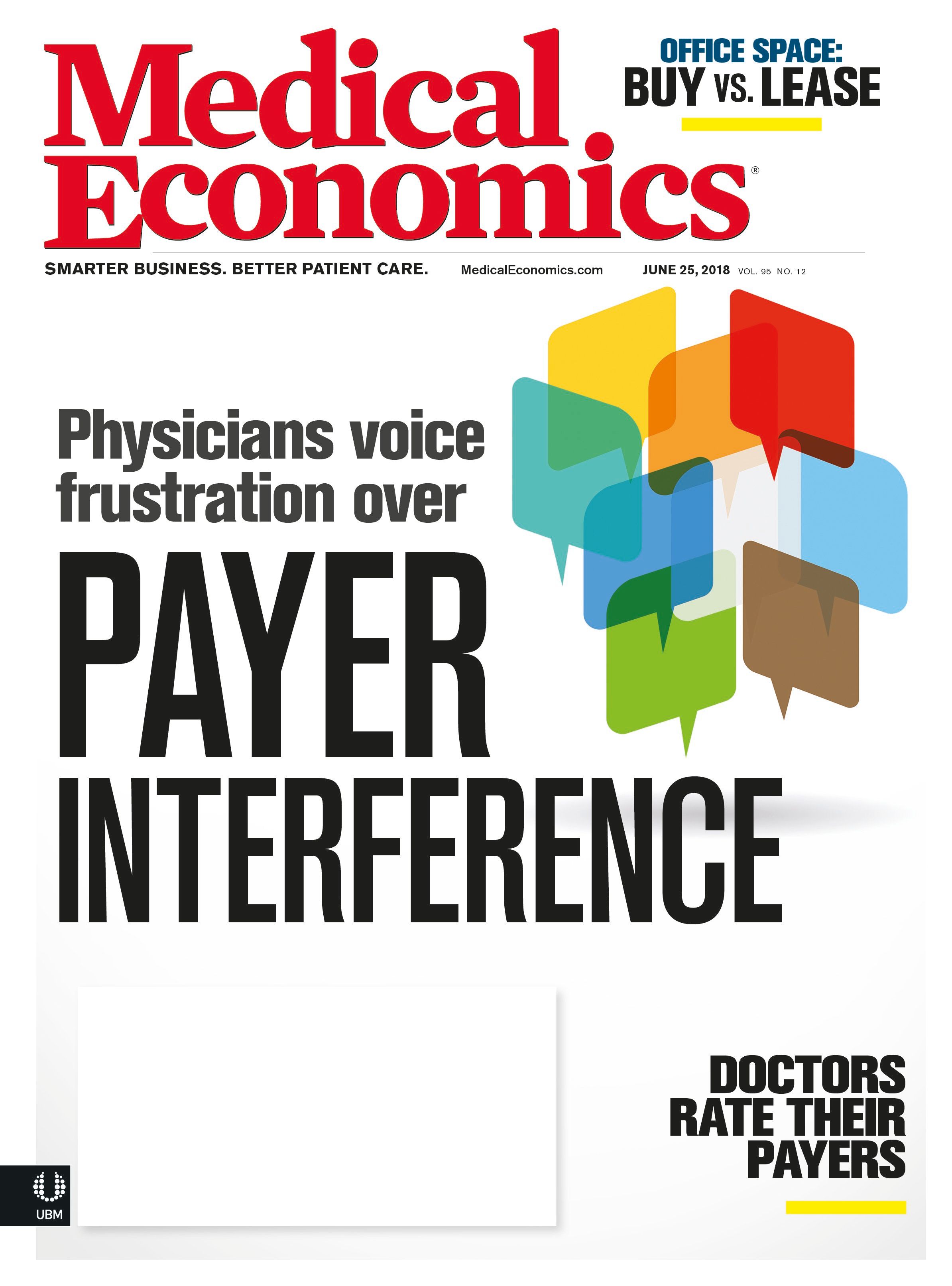- Revenue Cycle Management
- COVID-19
- Reimbursement
- Diabetes Awareness Month
- Risk Management
- Patient Retention
- Staffing
- Medical Economics® 100th Anniversary
- Coding and documentation
- Business of Endocrinology
- Telehealth
- Physicians Financial News
- Cybersecurity
- Cardiovascular Clinical Consult
- Locum Tenens, brought to you by LocumLife®
- Weight Management
- Business of Women's Health
- Practice Efficiency
- Finance and Wealth
- EHRs
- Remote Patient Monitoring
- Sponsored Webinars
- Medical Technology
- Billing and collections
- Acute Pain Management
- Exclusive Content
- Value-based Care
- Business of Pediatrics
- Concierge Medicine 2.0 by Castle Connolly Private Health Partners
- Practice Growth
- Concierge Medicine
- Business of Cardiology
- Implementing the Topcon Ocular Telehealth Platform
- Malpractice
- Influenza
- Sexual Health
- Chronic Conditions
- Technology
- Legal and Policy
- Money
- Opinion
- Vaccines
- Practice Management
- Patient Relations
- Careers
How to ensure correct reimbursement from payers
Experts say insurance companies sometimes underpay the contracted amount for a service or procedure-and practices often are unaware when it happens.
When doctors join an insurance network, they naturally expect to be paid according to the amounts specified in their contract. But that doesn’t always happen. Experts say insurance companies sometimes underpay the contracted amount for a service or procedure-and practices often are unaware when it happens.
While there are no hard data as to how often or by how much insurance companies underpay, practice management consultants say it occurs frequently enough that doctors need to constantly monitor their reimbursements-particularly at a time when many practices are having difficulty making ends meet.
So what can practices do to guard against being short-changed by insurers? To start with, experts say, have each payer’s contract on-hand, since it will include the rates the practice has negotiated with the payer. And while that sounds fairly basic, a surprising number of practices don’t have copies of their payer contracts, says Ken Hertz, FACMPE, principal consultant with the Medical Group Management Association.
“I guarantee that if I walked into 20 practices at random, 15 either won’t have their payer contracts or have them but can’t find them,” Hertz says. With the contract and payment rates in hand, the next-and probably most important-step is to enter the payment data into the practice’s revenue management software. After that, the software will automatically alert the practice any time it receives a payment that doesn’t match the contracted amount.
While it sounds simple in concept, practice management consultants acknowledge it’s often difficult to execute. That’s because most practices contract with numerous payers, each of which usually has multiple plans with separate fee schedules. Consequently, loading the fee schedules potentially becomes an extremely time-consuming task that can strain a practice’s resources.
“For most practices these days, it takes everything they’ve got just to get through the day,” says David Zetter, CHBC, founder and principal consultant of Zetter Healthcare in Mechanicsburg, Pa. “So then it becomes a question of, ‘Who’s got time to take on this extra project?’”
Nevertheless, Zetter and Hertz both recommend that practices undertake the task if at all possible, since it’s the most efficient way of determining whether the practice is being paid correctly. Moreover, Hertz notes, the project isn’t always as daunting as it fi rst appears. At most primary care practices, only a handful of payers account for a large percentage of the reimbursements.
And within that limited universe, most practices generally bill no more than a few dozen codes on a regular basis. So by focusing on those payers and codes, practices can maximize their return on the time required to load them.
Taking action
What recourse does a practice have if it finds it’s being reimbursed at less than the contracted amount? The first step, Hertz advises, is to see if there have been any changes to the payer’s fee schedule, which the practice usually can determine by checking on the payer’s website. If not, then the practice needs to review the insurer’s recent payments for the service to see if the error is a “one-off” or a regular occurrence.
Armed with that knowledge, the practice should alert the payer and say it expects to be paid the correct amount. If the payer hasn’t responded after about a month, he recommends following up with a request for an update on the corrected payment.
“You have to be patient, be tenacious in your follow-up, and you have to be thorough and accurate in the information you present to them.” If the payer still doesn’t respond, or refuses to correct the error, the next step is to notify the state’s insurance commissioner, since nearly all states have some form of “prompt payment” law. “Explain everything in detail, provide the information, and ask for an intervention/ assistance in resolving the matter,” Hertz advises.
Knowing that an insurer has a pattern of underpaying also is important when negotiating the next contract with that payer, says Zetter-a tactic he often uses when bargaining on behalf of clients.
“Part of our leverage is the knowledge that they haven’t been paying us [the client] appropriately to begin with,” he says. “Besides, it [loading the fee schedules] is an awful lot of work if you’re just trying to fi nd out if you’re being paid properly and have no intention of negotiating anything beyond that.”

